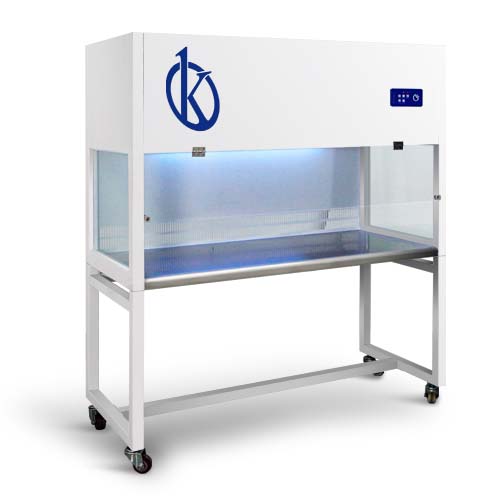The polymerase chain reaction (PCR) is a laboratory technique used to amplify DNA sequences. The method uses short DNA sequences called primers to select the part of the genome to be amplified. The temperature of the sample is raised and lowered repeatedly to help the DNA replication enzyme duplicate the DNA sequence that is being copied. With this technique, a billion copies of the sequence under study can be produced in just a few hours. Due to the high number of copies generated during the reaction, it is essential to prevent any possible contamination during the reaction by using a safety cabinet.
A polymerase chain reaction (PCR) workbench is a work area enclosed on three sides, which provides the space to perform DNA and RNA amplification. These work cabinets, used in biology and genetics laboratories, avoid cross contamination between samples and the ultraviolet light they have keeps the area sterile.
PCR workstations provide the contamination-free environment necessary for the detection of the most sensitive DNA / RNA segments. Routinely used in laboratory testing, the safety glass sheet provides maximum optical capabilities to manipulators when amplifying cellular components. Air quality is sustained (such as fresh air or with circulators and filters) to ensure that there are no particles that could impact conclusions. The cabinets emit intense UV light in timed increments between uses to facilitate sterilization.
What is the importance of PCR today?
Although it is true that in the field of science and health it was a technique that enjoyed much admiration. Currently its importance increased with the appearance of SARS-Cov-2 (Coronavirus). Due to the pandemic condition, which caused this virus, it was highlighted how essential it was to have reliable diagnostic methods such as PCR for the determination of this viral infection, which contributes to its timely diagnosis. This led to various research institutes around the world, associated with public health laboratories, being able to implement detection technologies based on the real-time reverse transcription polymerase chain reaction (RT-PCR, for its acronym in English) for accurate and reliable diagnoses.
Characteristics and advantages of a PCR work cabinet
- Provides a sterile work area for aseptic techniques.
- They have a high efficiency blower
- Energy efficient LED lighting
- Vertical laminar airflow with HEPA filtration
- Equipped with germicidal UV lamp for decontamination.
- 360 degree visibility with UV absorbing polycarbonate construction.
Each Kalstein PCR Workbench is expertly designed to meet specific applications and certified to provide quality analysis. They provide vertical HEPA filtered laminar flow to purge the work area of contaminants between amplifications and during preparatory procedures.
Our devices offer superior performance. The laminar flow with HEPA filter and UV decontamination technology of the PCR cabinet provide superior protection against cross contamination within the main chamber, making it the proven solution for contaminant-free PCR. That is why we invite you to take a look at the HERE

